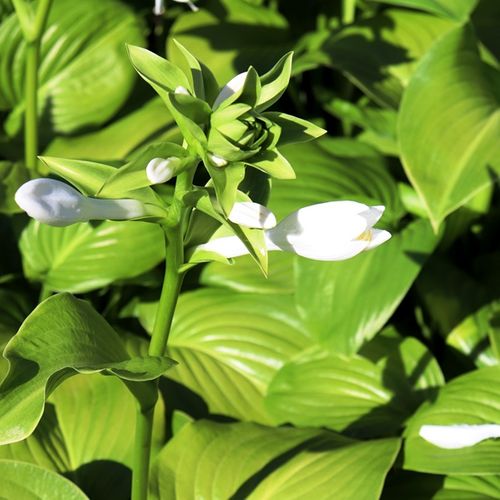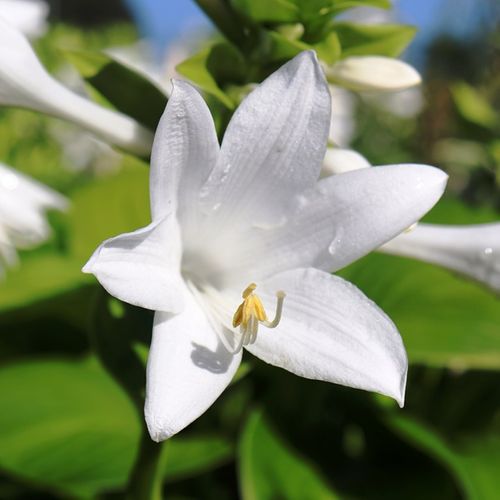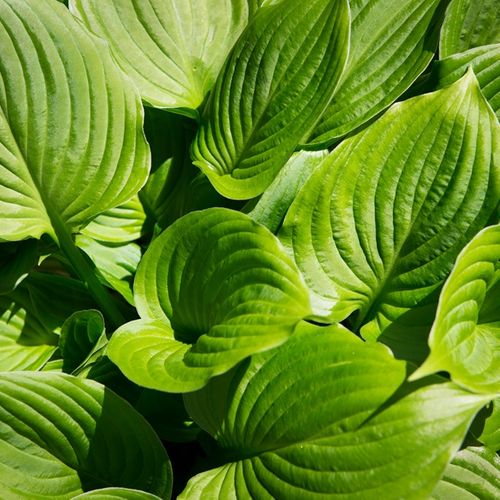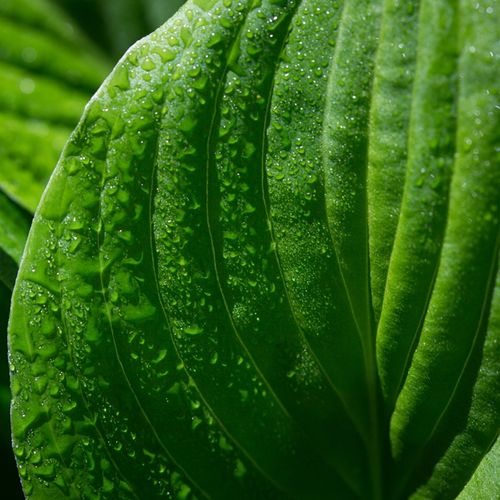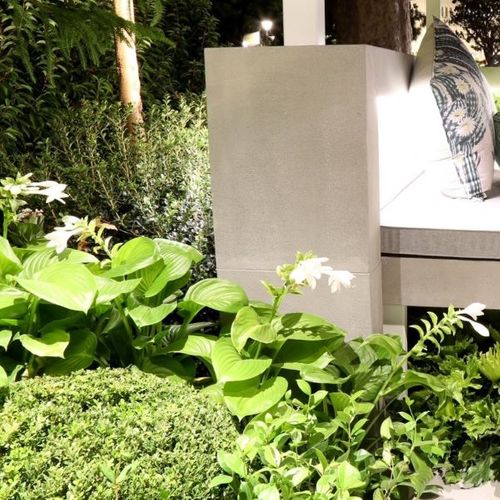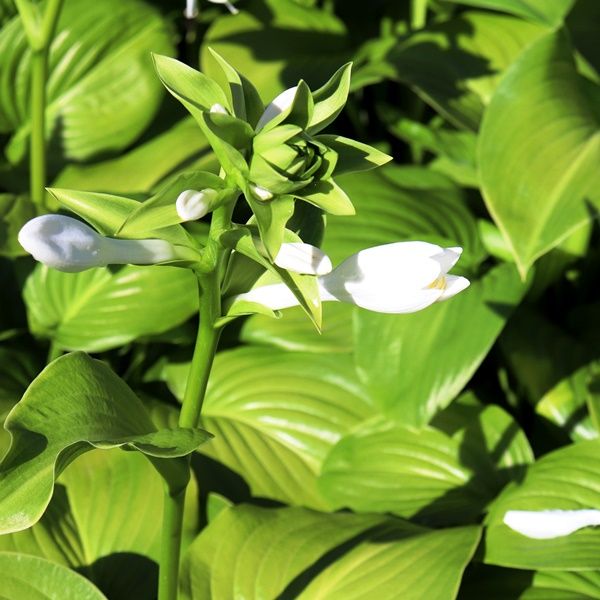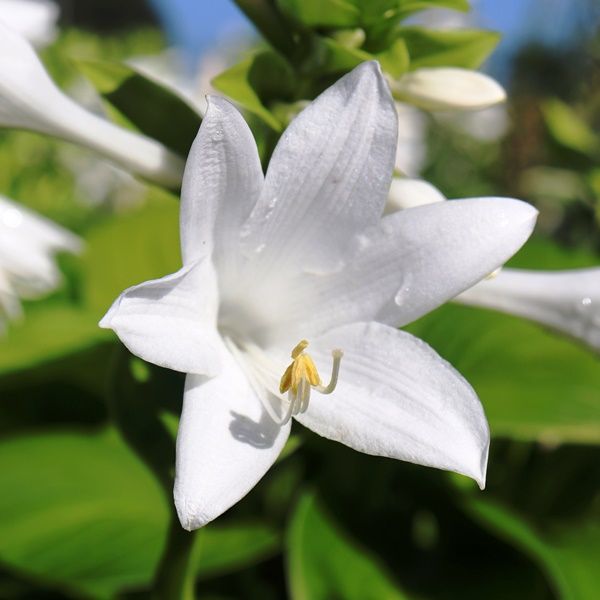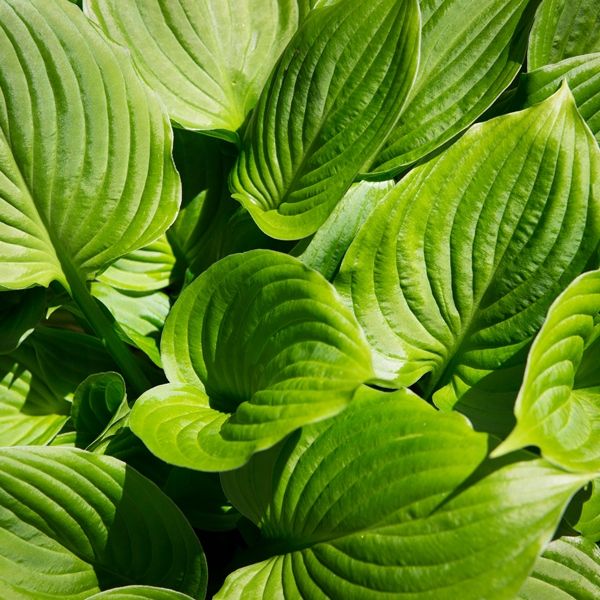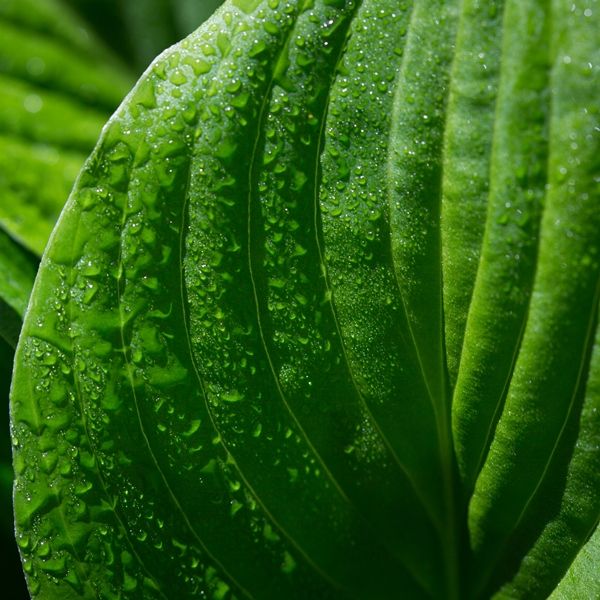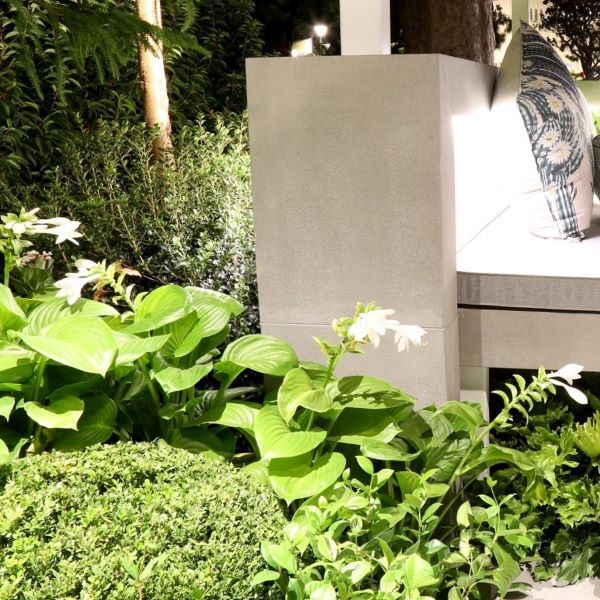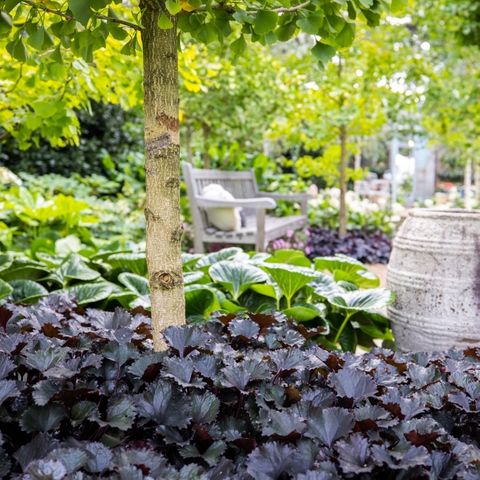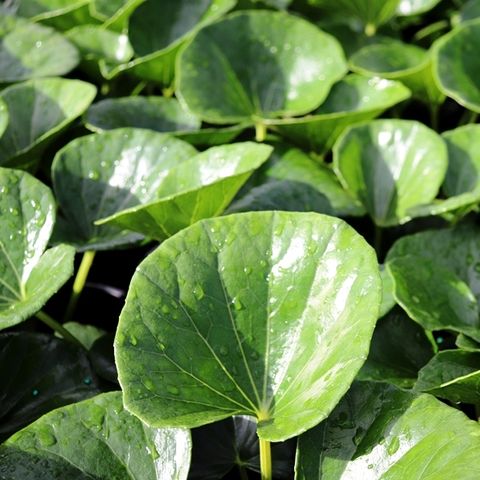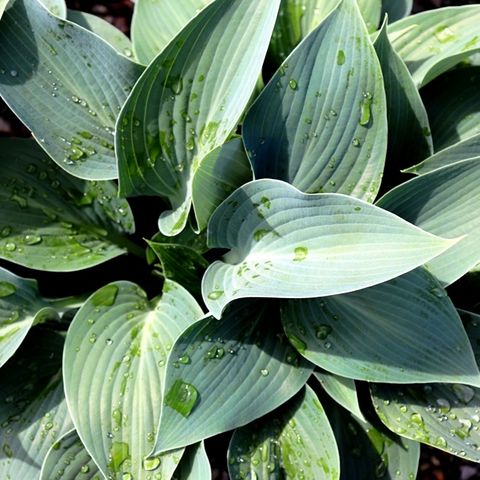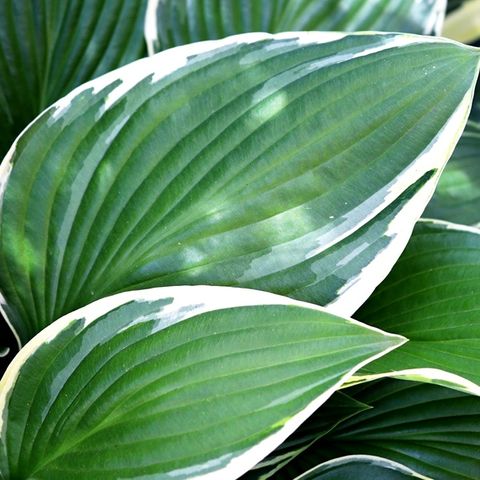Hosta grandiflora
Hosta grandiflora has large, heart-shaped leaves in a bright, lime-green. In mid to late summer, it produces tall spikes of nodding, white flowers. This combination makes it an attractive choice for shaded areas. These herbaceous perennials die down in winter merge in spring, bringing fresh vibrant leaves.
Cultural
Hosta should be planted in a position sheltered from strong winds and harsh afternoon sun. Hosta‘s with yellow leaves can usually tolerate more sun than other varieties.
Soil:
Prefers a fertile, well-drained soil.
Aspect:
Part shade to full shade.
Maintenance:
Remove spent flowers and leaves as required. Allow plants to naturally die back in autumn before cutting leaves off at the base. Apply a layer of compost and mulch after cutting back to provide plants with nutrients, and to protect them through winter. For plants in pots, apply a liquid fertiliser throughout the growing season. Susceptible to snail and slug predation, apply baits as required.
Water Requirements:
Keep moist in the warmer months, water sparingly in winter. Will not tolerate waterlogged soil.
Seasonal Interest:
Spring to autumn foliage interest, summer flowering.
Landscape Uses
Hosta is a versatile plant ideal for shaded garden beds, borders, and woodland gardens, where its lush, attractive foliage adds texture and colour. It works well as a groundcover, creating a soft, low-maintenance carpet of leaves under trees or along shaded walkways. Hostas can also be used in containers, adding a touch of elegance to patios, balconies, or porch areas. Their variety of leaf colours and textures makes them perfect for mixed plantings or as an understory plant in larger gardens, where they provide contrast to flowering shrubs and perennials.

